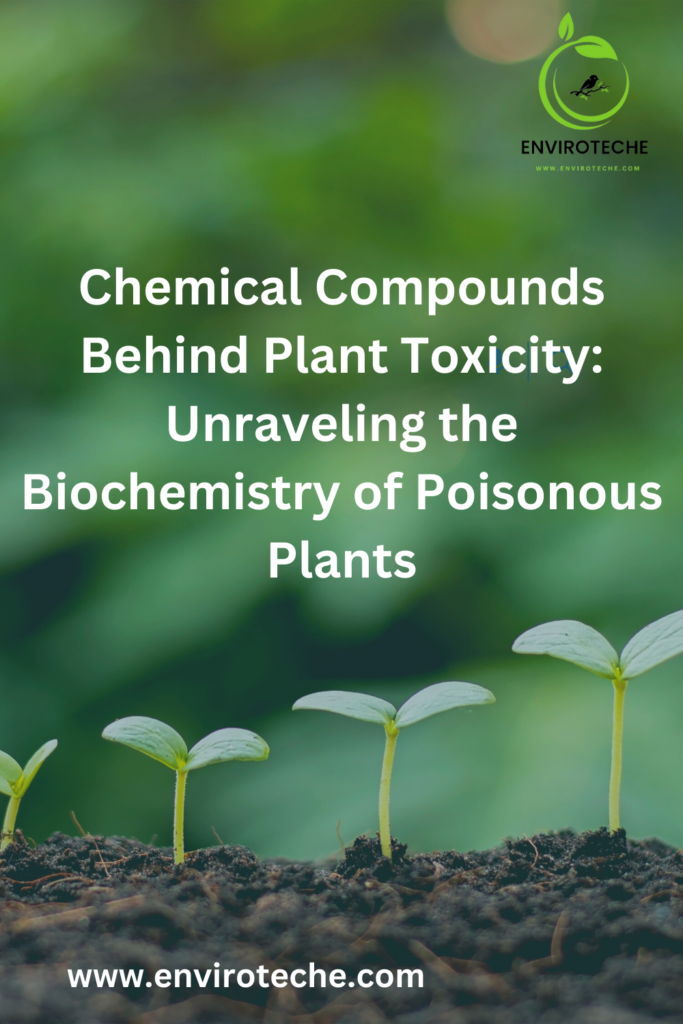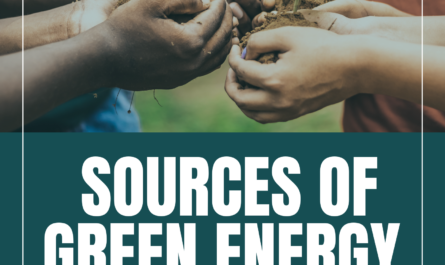Table of Contents

Plant Toxicity
Plant toxicity are caused by Alkaloids, glycosides, proteins, and amino acids are only a few of the diverse chemical poisons that are responsible for plant toxicity (Serrano, 2018). There are several well-known hazardous plants for which the precise chemical that causes poisoning has not been identified. Biological selection and novel methods of breeding that strengthen these protective systems may have resulted in the presence of natural poisons in food plants(Patel et al., 2013).
Plants frequently cause medical problems, usually because they contain phytochemicals. However, many phytochemicals or secondary metabolic products generated by plants are toxin-like molecules that, due to similarities in their structure to extracellular bacterial toxins, may be harmful to humans. These affect both humans and animals in both beneficial and detrimental ways.
Classification of Plant Toxicity
Major Toxicity: These kinds of plants have the potential to be fatal or seriously ill. Minor Illness: These plants may make you feel sick to your stomach or have diarrhea.
Toxic Agents
Anything that has the potential to have harmful biological toxic effects is a toxic agent. It may take the shape of a chemical, like cyanide, a physical, like radiation, or a biological, like snake venom (Poppenga, 2010).
(I)Chemical Toxic Agents:
Exposures of hazardous chemicals from the environment that may be present in the food we eat, the water we drink, and the air we inhale are referred to as toxic agents. For women who are expecting, exposure to harmful substances can also pass through the placental barrier. e.g.Cyanide
(II) Physical Toxic Agents
Physical toxicants are compounds that disrupt biological functions because of their physical makeup(Singh et al., 2019). Examples include divided into small silicon dioxide, asbestos fibers, or coal dust, all of which can be lethal if inhaled. e.g.Radiation
(III) Biological Toxic Agents
Living things produce a diverse range of substances known as biological poisons. They are described as “Chemicals generated by living things that have toxic effects for another organism” in one lexicon. e.g.Snake Venom.
Classification of Plant Toxins
Alkaloids
These are a few examples of organic compounds with nitrogen in heterocyclic rings that are fundamental and formed from amino acids. The majority of these compounds have potent physiological effects. The belladonna alkaloid the drug atropine hyoscyamine, and scopolamine are tropane alkaloids with significant antimuscarinic properties that are known to contribute to classic anticholinergic syndrome.
Glycosides
These molecules are composed of an aglycone, a non-sugar moiety, to which several sugar chains release prussic acid (Krebs Jr, 1974). Cyanide ions attach to mitochondrial cytochrome oxidase, blocking electron transport as a result. Acute cyanide intoxication’s clinical symptoms can include rapid breathing, a drop in blood pressure, a rapid heartbeat, dizziness, headache, stomach pain, vomiting, and diarrhea.
Tannins
Tannic acid has a moderate level of toxicity when taken and inhaled. Acute, high-dose consumption and absorption can harm the liver and result in symptoms like nausea, vomiting, constipation, and abdominal discomfort. Centrilobular liver necrosis may occur as a result of severe intoxication.
Proteins
The possible harmful effects of these proteins are a significant concern for the health of humans as well as animals due to the widespread distribution of lectins, which are also present in food plants and crops. Lectins can be extremely poisonous to animals, with consequences ranging from mild antinutritional effects to fatal ones.
Anti-vitamins
Some compounds counteract vitamins, such as coumarins, which are anti-vitamin K, and thiaminases found in horsetails and bracken, which break down thiamine.
Volatile Oils
Liquid compounds known as volatile oils are produced in unique oil tissues, oil glands, hairs, or tubes. They are all alcohol soluble. Some substances are irritating (causing blisters) and emetic in specific quantities. Omally Several volatile oils are kidney damaging.
Lectins
Lectins, a type of toxin found in many bean varieties, are particularly concentrated in kidney beans, and red kidney beans. Serious stomach pain, vomiting, and diarrhea can be brought on by eating raw beans. The dry beans must be soaked for a minimum of twelve hours before being aggressively cooked for at least ten minutes to eliminate the lectins.
Poisonous Mushrooms
Numerous toxins, including muscle relaxants and muscarine, which can cause nausea, diarrhea, confusion, visual abnormalities, salivation, and hallucinations, may be present in wild mushrooms. Six to twenty-four hours or more before consuming mushrooms, indications may start.
Solanines and Chaconine
Toxic substances termed solanines and chaconine, which are glycoalkaloids, are found naturally in all Solanaceae plants, including tomatoes, potatoes, and eggplants. Although levels are often low, potato sprouts, bitter-tasting skins, and green sections, as well as green tomato products, have higher concentrations. In reaction to stresses including bleeding, UV exposure, pathogens, and infections from parasitic insects and herbivores, the plants create poisons.
Mechanism of Action of Plant Toxins
Their phyto-constituents, such as alkaloid compounds, glycosides, proteins, tannins, volatile oils, aromatic compounds, and steroids, are what primarily determine how they operate. They work by a variety of distinct pathways in the body of an animal or a human, involving receptors, transporters, enzymes, and even genetic material in particular cells and tissues.
Neurotoxins
The predominate mechanism for the action of neurotoxins is related to one or both of the primary tasks of the sensitive cell, depending on conductible activity impacting Na+ or K+ permeability, according to physiological, ultrastructural, and biochemical relationships.
Cytotoxins
Cytotoxic phytochemicals either cause cell death or cell cycle arrest by inducing apoptosis and necrosis or by obstructing a variety of cell-signaling mechanisms.
Toxicological Effects of Plant Toxins
Plants include chemicals that may have hazardous effects on the endocrine and reproduction systems as well as the skin, lungs, kidneys, liver, urinary bladder, blood, and neurological system. Common skin reactions to several plants include photosensitivity and contact dermatitis.Some of the above toxins have a great deal of strength.Severe poisoning, which can result in everything from allergic reactions to potentially fatal stomachaches and stools, can have negative health effects.
Long-term health effects can include cancer as well as effects on the brain, immunological, or reproductive systems. The repercussions of plant toxicity include cancer, organ damage, immune system deterioration, allergy or asthma development, and cancer. Food poisoning caused by plant toxins is typically brought on by the consumption of partially cooked beans, some potato cultivars, and the use of wild herbs not intended for human consumption, such as toxic berries and mushrooms.
Other known allergic disorders caused by photochemical components include urticarial from consuming strawberries and peanut allergy. Certain types of secondary allergic alveolitis are caused by phytoconstituents.
Natural Plant Toxins
Natural poisons are chemicals that are created spontaneously by living things. Although the organisms themselves are not at risk from these toxins, people or other animals may be poisoned if they consume them. Some plants can naturally produce chemicals that are toxic to humans if consumed.
Examples: Lectins in beans like green beans, red kidney beans, and white kidney beans; glycosides that are cyanogenic in unpleasant apricot seeds, bamboo shoots, cassava as well, and flaxseeds; 4’-methoxypyridoxine in the ginkgo seeds; and colchicine in fresh lily flowers are some typical examples of natural toxins in food plants.
Conclusion
Many edible plants include plant toxins, which have both detrimental and useful properties for human health. These compounds could include proteins, glycosides, tannins, and alkaloids. These poisons pose an issue about various diseases and could pose a threat as bioterrorist weapons. However, it is an excellent tool for studying cellular and other processes, and as our understanding of plant toxins grows, we may be able to develop novel pharmaceuticals.
References:
Krebs Jr, E. T. (1974). The nitrilosides in plants and animals. Vitamin B17. Culbert, M. New Rochelle: Arlington House, 145-164.
Patel, S., Nag, M. K., Daharwal, S., Singh, M. R., & Singh, D. (2013). Plant toxins: an overview. Research journal of Pharmacology and Pharmacodynamics, 5(5), II. Plant Toxicity
Poppenga, R. H. (2010). Poisonous plants. Molecular, Clinical and Environmental Toxicology: Volume 2: Clinical Toxicology, 123-175. Plant Toxicity Plant Toxicity Plant Toxicity Plant Toxicity Plant Toxicity Plant Toxicity Plant Toxicity Plant Toxicity
Serrano, R. (2018). Toxic plants: Knowledge, medicinal uses and potential human health risks. Environment and Ecology Research, 6(5), 487-492.
Singh, P. K., Singh, R. P., Singh, P., & Singh, R. L. (2019). Food hazards: Physical, chemical, and biological. In Food safety and human health (pp. 15-65). Elsevier.
Author detail:
Aisha Ghaffar, Razia Yaseen
Department of Chemistry, University Of Agriculture Faisalabad, Sub-Campus Toba Tek Singh
Check Other Scholarships:

